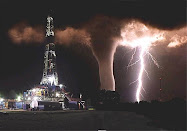Money is the universal commodity, they say. With money you can buy anything (except maybe happiness).
In a prior blog, “The Decline of Money”, May, 2010, I demonstrated that all money is fiat currency, and there is no stable fiat currency, not even theoretically. Money can be created without limit. There is no natural limit to digits printed on paper. While money is useful for buying things, it is too volatile a measure to be any kind of real yardstick for wealth.
In the U.S, we each employ the indirect labor of many invisible people. These invisible people wash our clothes, heat our water, push our vehicles, melt silica into glass, smelt ores, mine diamonds, sinter gypsum into cement, assemble molecules into chemicals, carry messages and light up the night. Our prosperity is thoroughly and intimately tied to the efforts of these voiceless servants. Our regional, national and World Gross Product goes up and down with the contributions of these assistants more closely than it does with bank reserves, interest rates or the stock markets.
I’m talking about energy. Energy is the one most universal commodity, without which civilization rapidly decays, not just into the stone age, but into a hunter-gatherer phase that can support only a few hundred million out of the 6 billion humans on this planet. Energy is control over the environment and control is wealth for an advancing civilization.
The unit of energy (see our prior discussion in “World Energy – The Questions and the Numbers" we use to describe energy is the joule. A joule will lift one pound about 9 inches (or push against a force of 1 newton a distance of 1 meter). For a planet, we need to talk in exojoules, a billion billion joules (1018 joules) or EJ. We use about 500 EJ every year. Many charts show usage in quadrillions of BTU’s, or “quads”. 500 EJ is about 473 quads. As a developing nation matures, the singular marker of that maturity is its energy consumption. China is the current poster child for this phenomenon.
When you shift your perspective on wealth from money to energy, you begin understand economic trends and events that are otherwise mysterious.
In the 1991, when Russia’s economy collapsed, one of the fallouts was that Russian oil exports to Cuba were discontinued. Food still grew, people still worked, but crops rotted in the field for lack of transport. Electricity ran only an hour a day. Within weeks, food disappeared off the shelves of stores. Food was rationed. Within the year the average Cuban lost 20 pounds. Cuba’s collective state owned farming coupled to its geographic isolation as an island nation made it particularly vulnerable to this kind of energy collapse.
In my first course in economics, I had a wall chart entitled “The Input/Output Model of the Economy” by Samuelson. One of the major inputs was energy, along with employment and natural resources. However, automation leverages labor, and natural resources cannot be mined, harvested, refined, smelted or distributed without energy. Energy is conserved – it’s physics. The branch of economics that deals with resource inputs, as opposed to monetary effects, is called Thermoeconomics. In fact, there is plenty of support behind the idea that energy is primary and monetary effects are secondary to economies on a national or global scale.
With this perspective, let’s examine some US energy policies in this time of extended high unemployment and recession:
Switching to more efficient usage:
This includes fluorescent lighting, LED’s, better insulation on buildings, improvements in auto mileage, and efficient factory methods. As a means to reduce energy consumption, this will not work. It effectively reduces the cost of each mile or each heating bill, so we will use more of them. In fact, this is what actually happens. True, we are getting more utility from those extra miles, more and better light, and we are living and working in more comfortable environments because of these efficiency improvements. That’s an increase in prosperity. Some of us will choose to drive more, others will spend the extra energy cooling their homes in summer. Having this choice is also a measure of prosperity. Technologies that improve efficiency and factories that make efficient products will generate more jobs. This is a positive effect all the way around. Left to market forces, the things that work best will drive out the things that don’t work or are too expensive for what they do. The useful role for government here is to encourage research and entrepreneurship, and otherwise keep hands off.
Restricting energy production:
Obviously, anything that reduces the energy input will reduce prosperity. That includes the prohibition of deep water exploration in the Gulf, discouraging nuclear power plant permits, and any kind of carbon tax or tax and trade. The political pundits try to put costs on these actions in terms of instant jobs lost, or in terms of per household increases in the cost of electricity. These are only the initial effects. The ultimate effects as these energy reductions ripple through the economy are many times greater. The average politician does not understand this, and hopes that you will not, either.
In order for the US to sustain a healthy GDP growth in the range of 3.5% per year, we need to add a similar amount to the energy inputs. That is roughly 17.5 EJ per year, equivalent to a few thousand large electric power plants added every year. There is no source of energy we can afford to give up without losing wealth.
Windmills clutter the landscape and kill migrating birds. Solar panels absorb heat and raise the local temperature. Fracking rock formations for natural gas can introduce chemicals into the water table. Hydroelectric dams disrupt fish and can break and drown thousands downstream. There is no such thing as a problem-free energy source.
Our goal should be to trade off cleaner and better energy sources for more destructive sources, avoiding both environmental fanatics and irresponsible exploiters. It’s a classic cost-benefit analysis that will change with every new invention, not a political contest or an opportunity for sound bites and slogans.
It should also be clear that to stimulate an economy in recession we cannot restrict energy inputs.
Carbon Footprints and Energy Diets:
This is called stretching a metaphor. We are hardly fat from energy, and we don’t leave carbon footprints.
We could usefully consume ten times more energy per capita. We could switch from wood to aluminum for construction. We could use cement instead of asphalt for roads. We could use flying cars instead of roads at all. We could commute on intercontinental rocket planes in 90 minutes between Washington and Beijing. We could dispense with parkas and wear electrically heated and cooled clothing. All these would use more energy.
On a national and less consumer oriented level, if we had access to huge quantities of cheap energy we could desalinate the oceans and water the Sahara. We could build and launch space parasols to counter potential global warming. We could pump water up Niagara Falls to store truly massive amounts of energy. We could force-grow food under lights for starving refugees, set up comfortable retirement colonies under the lighter gravity of the Moon, create a fleet of ion rockets to move precious minerals from the asteroid belt, and on and on. Yes, it begins to sound like the new frontiers of science fiction, but that is exactly what energy can accomplish, with vision. We don’t have to settle for a bleak future and a decimated population.
The counterculture wants to make energy consumption a crime. How often do you see people wandering around the streets with carbon footprint numbers over their heads? Are we now supposed to feel guilty about using energy? Will going on an energy diet do anything but make us poor? No. In absolute terms, energy is prosperity. The people that claim they are saving the planet are not saving it for people. They don’t really like people.
Alternative Energy:
All the energy we have here came from the Sun. The Earth’s core is hot from the decay of radioactive materials from the formation of the solar system. Coal and surface oil are solar energy stored by plants and marine fossils. Wind and wave power are driven by the temperature differentials caused by solar radiation on the surface. Even fusion energy, when we figure out how to produce it, will use tritium or deuterium from the sea, left by the condensation of solar gasses.
The more of the sun’s energy we can capture directly, the less we have to tap the stored energy in coal and oil, although there is a lot of stored energy still left, thousands of years at the current rate of usage. So, alternative energy that taps the main supply, the sun, is the way to go.
Ethanol from food sources is simply robbing Peter to pay Paul. Without the subsidies, corn and sugar-derived ethanol is not only a waste of energy, it is not even a clean fuel. Ethanol is a poor fuel at best. Its only saving grace is that it can be blended to go into a gas tank. Derived from cellulosic materials like wood pulp and switch grasses it is marginally useful, but all that we are really doing is converting an inefficient source into a portable form of stored energy. Better far to concentrate on energy storage per se, preferably electric, and to deliver huge quantities of cheap electricity from whatever source may be convenient to wherever it needs to be.
Biodiesel from algae may be a good alternative energy source as well as a convenient chemical storage form for energy in certain applications. Algae tends to die off before the growth medium saturates with the fatty esters used to make biodiesel, and the esterification process requires alcohol. Again, the better solution is stored electric energy.
Wind power, wave power, geothermal and ground source heat pumps are all good and proven sources of alternative energy, where they are available. A lot more could be done with them.
Hybrid vehicles with a good combination of energy recovered from braking, stored electric energy and diesel generation ought to be useful on today’s roads. However, they are likely to better solutions to public transportation, busses and trams, than they are for personal vehicles. It’s absurd to build a car like the Chevy Volt that takes two days to recharge for two hours of driving. That is government meddling at its finest.
What about pollution? Is there an economic cost to the environment? Is there a limit to just how much we can take out of the planet for our prosperity? Well, yes there is, but we are a long way from any kind of a tipping point, and that includes global warming. As a species we will either face a future where prosperity is limited to a few, or where the world population is limited by policy, war or calamity, or where we get off this planet and continue our quest for prosperity elsewhere. All of these choices are difficult, none of them are desirable with today’s technology, and the default condition will be war and catastrophe. I personally hope we will see at least a short run of prosperity so we have a chance to develop our best long-term options.
Otherwise, we are just huddling on a tiny planet worrying about running out of oil.





No comments:
Post a Comment